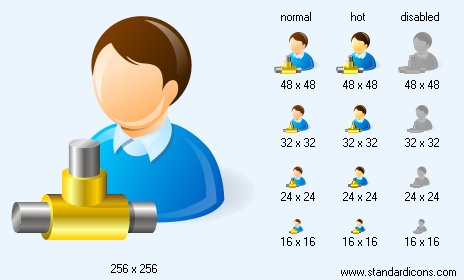


|
| ||||||||
|
|
Network Administrator Icon |
|
Icon sizes: 256x256, 48x48, 32x32, 24x24, 16x16, 512x512
File formats: ICO, GIF, PNG, BMP
Picking The Correct Image Format When Making Graphics.
There are innumerable file formats that can be put to use for saving images and for a newbie designer this can often lead to a big problem because you should know how to incorporate a certain image format, offered in this article is a take on the benefits and issues of some commonly used image formats.If you find yourself drawn to icon making or want to create pictorial depictions for your web page, it is crucial to know about the different image formats and their attributes so that you can use the correct file type for graphics. Normally used formats for pictures are PNG, GIF and JPEG, each one of these formats boasts of a fair share of advantages so lets look at the benefits and drawbacks of using these formats, the type of image format that should meet the expectations your website and optimizing your web graphics for the web usage.
GIF: The full form is Graphics Interchange Format; the format is by far the most popular file type. The reason for its popularity is its small size which makes uploading less time consuming. Also like JPEG, information is not lost in this format ; this equates to the fact that you can store the graphic without using up a lot of space and compromising the quality of the picture. GIF offers transparency support in pictures, it is by far the most suitable formats for picture designing. Unlike the other formats, animation is also offered in GIF. If you would like to consider GIF image optimization, it is vital to restrict the size of the file; it is advisable that you pick a 32 color palette to achieve a suitably small size.
JPEG: This is short for Joint Photographic Experts Group; the file format is commonly called JPG and is usually incorporated in web designing. One of the main benefits of using this type of file is that you can save the graphics in true color that affords you a palette of 16 million colors; making this file format appropriate for storing photos and images that include vast color work. One of the issues of using JPG is the loss of details that you will have to deal with each time the image is saved; this points to the fact that the picture is susceptible to compromised clarity and many information may be lost. Unlike GIF, transparency is not possible in this format. If you are using an advanced image editor for instance, the Adobe Photoshop, you will be able to select the image quality and the size of the JPG file but it is important to realize that the lower the resolution the smaller the size, which is convenient to upload.
PNG: Is stands for Portable Network Graphics and is a fairly fresh image format. This format is available in two forms; PNG-8 which is the 8 bit color format and the PNG-24 which uses 24 color graphics. PNG-8 can curtail the size pictures with wonderful detail and without the normal loss of data experienced in the GIf format; this results in better image quality and quick uploads. However, PNG-24 is not as effective as JPG when you have to store pictures and other graphics that merit the use of a wider color range. The format is sans loss; this means that the photograph retains its quality and clarity. PNG-24 offers the transparency feature and you can utilize various levels of transparency in this file format. When you use this file format the pictures are better looking because they do not have the jagged edges when placed against a contrasting color backgrounds like GIF files.
Copyright © 2009-2022 Aha-Soft. All rights reserved.
|
